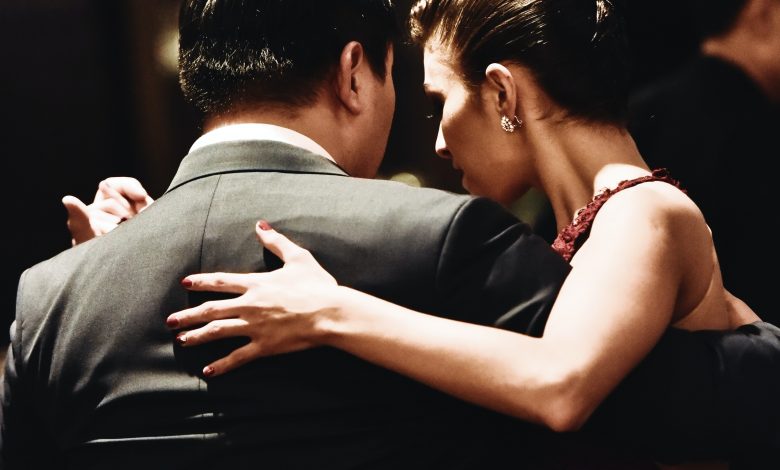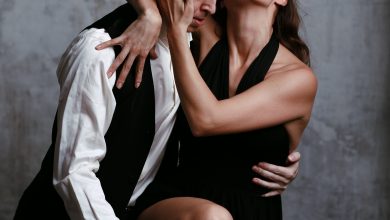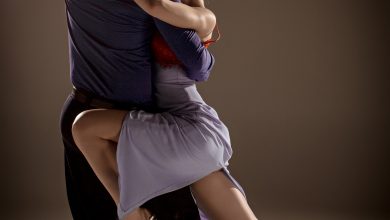The Sweep or Drag (Barrida or Arrastre)

This uniquely tango step requires the leader to use one of his feet to move the follower’s foot using a sweeping or dragging motion of their foot. This move is known by two Spanish terms: barrida(sweep) and arrastre (drag).
The move begins with the leader taking a sideways step to the left with their left foot (follower steps to the right with their right foot. The leader then moves their right foot to the left bringing it into contact with the follower’s right foot with the parade step. The follower brings their left foot to the right connecting to the leader’s right foot so effectively sandwiching the leader’s right foot. The leader’s weight remains on their left foot with the follower’s weight remaining on their right foot. The leader then makes a small step to the left with their left foot while simultaneously leading the follower to take a step back and to the right with their left foot. Both the leader and follower should fully change weight. Immediately, the leader feels that there weight has changed, they should take their right foot (which is touching the follower’s right foot) and sweep or drag this foot to the left taking the follower’s right foot with them with no change of weight required. This motion is the sweep or drag. At this point, the leader has a choice of ways to exit following the sweep or drag. The leader can lead the follower into a Pasada since they are already in a Parada position. The leader can sandwich the follower’s right foot and then do a Pasada. The leader could do a simply tango basic exit.
Here are some demonstration videos to watch:
How to do the Drag by Diego Blanco and Ana Padrón.
Argentine Tango Lesson including Back Ocho, Parada, Barrida, Half Sandwich and a Low Boleo by Shannah & Phil.
How to Triple Drag (also known as the Triple Arrastre) by Diego Blanco & Ana Padrón.
El arrastre o la barrida by Véronique Guide & Julio Luque.
Barridas and Paradas by Michelle Marsidi & Joachim Dietiker.
Barrida by TangoForge. An interesting variety of barridas are shown.
Corte with Barridas
Turn with Drag
Triple Barrida



